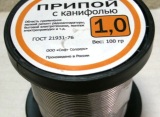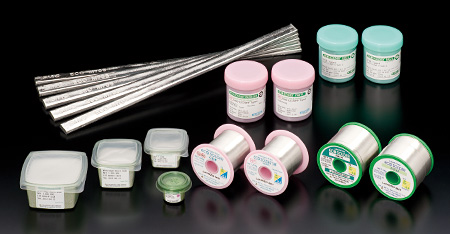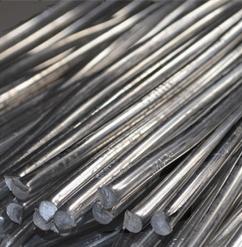Classification of soldering irons, technical characteristics and recommendations for selection
 When choosing solder, you should be guided by the following principles:
When choosing solder, you should be guided by the following principles:
1) the melting temperature of the soldered parts must be higher than the melting temperature of the solder,
2) good wettability of the base material must be ensured,
3) the values of the coefficients of thermal expansion of the base material and the solder should also be close,
4) the lowest solder toxicity,
5) the solder should not violate the mechanical properties of the base material and form a galvanic pair with it, which leads to intense corrosion during operation,
6) the properties of the solder must meet the technical and operational requirements for the construction as a whole (strength, electrical conductivity, corrosion resistance, cold resistance, etc.),
7) solders with a limited crystallization interval require the quality of the surface preparation for soldering and ensure an accurate capillary gap, with large gaps it is better to use composite solders,
8) self-watering solders, without zinc and other metals with high vapor pressure, are most suitable for vacuum soldering and soldering in a protective gas environment,
9) for soldering non-metallic parts, solders with additives of elements with the highest chemical affinity are used (for ceramics and glass - with zirconium, hafnium, indium, titanium).

Solders are classified according to several criteria:
1. By melting point:
a) low-temperature (Tm up to 450 degrees, based on gallium, indium, tin, bismuth, zinc, lead and cadmium): especially light melting (Tm up to 145 degrees), low melting (Tm = 145 .. 450 degrees);
b) high temperature (Tm more than 450 degrees, based on copper, aluminum, nickel, silver, iron, cobalt, titanium): medium melting (Tm = 450 ... 1100 degrees), high melting (Tm = 1100 ... 1850 degrees. ), Refractory (Tm more than 1850 degrees.).
2. By type of melting: fully and partially melting (composite, from solid filler and low-melting part).
3. According to the method of obtaining solder - ready and formed in the soldering process (contact-reactive soldering). In contact reactive soldering, the solder is produced by melting the base metal, spacers (foil), coatings, or displacing the metal from the flux.
4. By the main chemical element in the composition of the solder (content over 50%): indium, gallium, tin, magnesium, zinc, aluminum, copper, silver, gold, nickel, cobalt, iron, manganese, palladium, titanium, niobium, zirconium , vanadium, mixed solders of two elements.
5. By the method of flow formation: fluxing and self-flowing containing lithium, boron, potassium, silicon, sodium. Flux is used to remove oxides and protect edges from oxidation.
6.By solder production technology: pressed, drawn, stamped, rolled, cast, sintered, amorphous, grated.
7. By Type of Solder: Strip, Wire, Tubular, Strip, Sheet, Composite, Powder, Paste, Tablet, Embedded.

Among low-temperature solders, the most common are lead solders for tin (Tm = 183 degrees with a tin content of 60%). The tin content can vary within 30 ... 60%, Tm = 145 ... 400 degrees. With a higher content of this element, the melting temperature decreases and the fluidity of the alloys increases.
Since the alloy of tin and lead is prone to disintegration and does not interact well with metals during soldering, alloying additives of zinc, aluminum, silver, cadmium, antimony, copper are introduced into the composition of these solders.
Cadmium compounds improve the properties of solders, but they have increased toxicity. Solders with a high zinc content are used for soldering non-ferrous metals - copper, aluminum, brass and zinc alloys. Tin solders are heat-resistant up to a temperature of about 100 degrees, lead - up to 200 degrees. Lead also corrodes rapidly in tropical climates.
The lowest temperature solders are formulations containing gallium (Tm = 29 °). Tin-gallium solder has Tm = 20 degrees.
Bismuth solders have Tm = 46 … 167 degrees. Such solders increase in volume during solidification.
The melting point of indium is 155 degrees. Indium solders They are used when soldering materials with different temperature coefficients of expansion (for example, corrosion-resistant steel with quartz glass), because it has the property of high plasticity.Indium has oxidation resistance, alkali corrosion resistance, good electrical and thermal conductivity, and wettability.
Among the high-temperature solders, the most fusible are copper-based compounds... Copper solders are used in soldering steel and cast iron, nickel and its alloys, as well as in vacuum soldering. Copper-phosphorus solders (phosphorus content up to 7%) are used for soldering copper as an alternative to silver solders.
They have higher plasticity copper solders with silver and manganese additives... In order to improve the mechanical properties, additives of nickel, zinc, cobalt, iron, alkali metals, boron and silicon are introduced.
Copper-zinc solders more refractory (Tm more than 900 degrees. With the amount of zinc up to 39%), used for soldering carbon steels and various materials. The loss of zinc in the form of evaporation changes the properties of the solder and is harmful to health, as well as cadmium fumes. To reduce this effect, silicon is introduced into the solder.
Copper-nickel solders suitable for soldering parts made of corrosion-resistant steels. The nickel component increases the Tm. To reduce it, silicon, boron and manganese are introduced into the solder.
Silver solders are made in the form of a «copper-silver» system (Tm = 600 ... 860 degrees). Silver solders contain additives that reduce Tm (tin, cadmium, zinc) and increase joint strength (manganese and nickel). Silver solders are universal and are used for soldering metals and non-metals.
When soldering heat-resistant steels, use solders for nickel from the "nickel-manganese" system... In addition to manganese, such solders contain other additives that increase heat resistance: zirconium, niobium, hafnium, tungsten, cobalt, vanadium, silicon and boron.
Aluminum soldering is performed aluminum solders with the addition of copper, zinc, silver and silicon reduction of Tm. The last element forms the most corrosion-resistant system with aluminum.
Soldering of refractory metals (molybdenum, niobium, tantalum, vanadium) is carried out with pure or composite high-temperature solders based on zirconium, titanium and vanadium. Tungsten soldering produced from complex solders of the systems "titanium-vanadium-niobium", "titanium-zirconium-niobium", etc.
The properties of the solders and their chemical composition are shown in Tables 1-6.
Table 1. Ultra-low melting solders
Table 2. Properties of some low-temperature alloys
Table 3. Properties of tin solders with the addition of silver / copper
Table 4 (part 1) Properties of solders for tin and lead
Table 5. Properties of solders based on indium, lead or tin with silver additives
Lead-free soldering technologies: SAC solders and conductive adhesives
